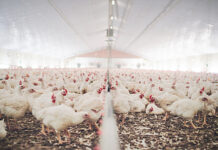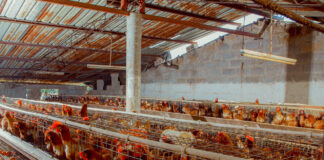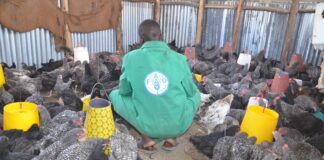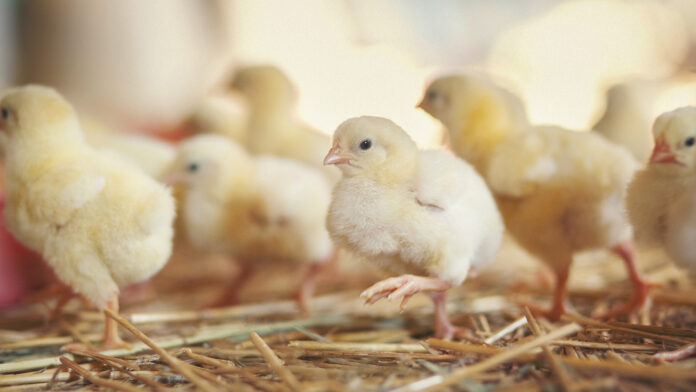
Surface waters in the United States are regularly assessed as a part of the Clean Water Act to determine whether the water quality protects aquatic wildlife and provides for safe recreation. This assessment determines in large part whether surface waters are “fishable and swimmable.” When surface water quality standards are not met, the water body is formally listed as “impaired.” Once listed, strategies and controls are required as part of a watershed-based conservation plan which is designed to improve water quality. In some watersheds, animal feeding operations, including poultry farms, are associated with impaired water quality that results from high surface water nutrient concentrations that cause excess algae blooms.
Tom Tabler, Professor and Extension Specialist, Department of Animal Science, University of Tennessee
Shawn Hawkins, Professor and Extension Specialist, Department of Biosystems Engineering and Soil Science, University of Tennessee
Yi Liang, Associate Professor, Departments of Biological and Agricultural Engineering/Poultry Science, University of Arkansas
Victoria Ayres, Assistant Professor, School of Agriculture, Tennessee Tech University
Jonathan Moon, Extension Instructor, Department of Poultry Science, Mississippi State University
Pramir Maharjan, Assistant Professor and Extension Specialist, Department of Agricultural and Environmental Sciences, Tennessee State University
Perception versus reality
Unfortunately, the implementation of many watershed-based conservation plans has failed to deliver significant water quality improvement within the timescales predicted by scientists. The conclusion reached by many water quality conservationists is that conservation efforts are not being effectively implemented at a sufficient scale and intensity. More specifically, in nutrient-impaired watersheds with a significant number of poultry farms, the lack of water quality improvement can be interpreted as an indication that litter nutrients are not being managed agronomically.
The reality is that within watersheds impaired by high nutrient concentrations, and particularly high phosphorus concentrations, it can be a difficult task to improve water quality. In areas where years of overapplication of poultry litter have occurred, excess soil phosphorus (P), which is referred to as “legacy P,” is problematic because it can be mobilized from agricultural fields and repeatedly recycled in surface waters for years, decades or even centuries. Current conservation plans likely do not take adequate account of “legacy P” issues arising from past land management practices. Spiegal et al. (2020) developed the concept of a “manureshed” — the lands surrounding animal feeding operations onto which manure nutrients can be redistributed to meet environmental, production and economic goals. Manuresheds can be managed at multiple scales, for example, on individual farms with both animals and crops, among animal farms and crop farms within a county or localized area, or regionally among animal farms and crop farms in distant counties covering a large area. This manureshed concept may present a possible solution to the challenge of proper poultry litter nutrient recycling?
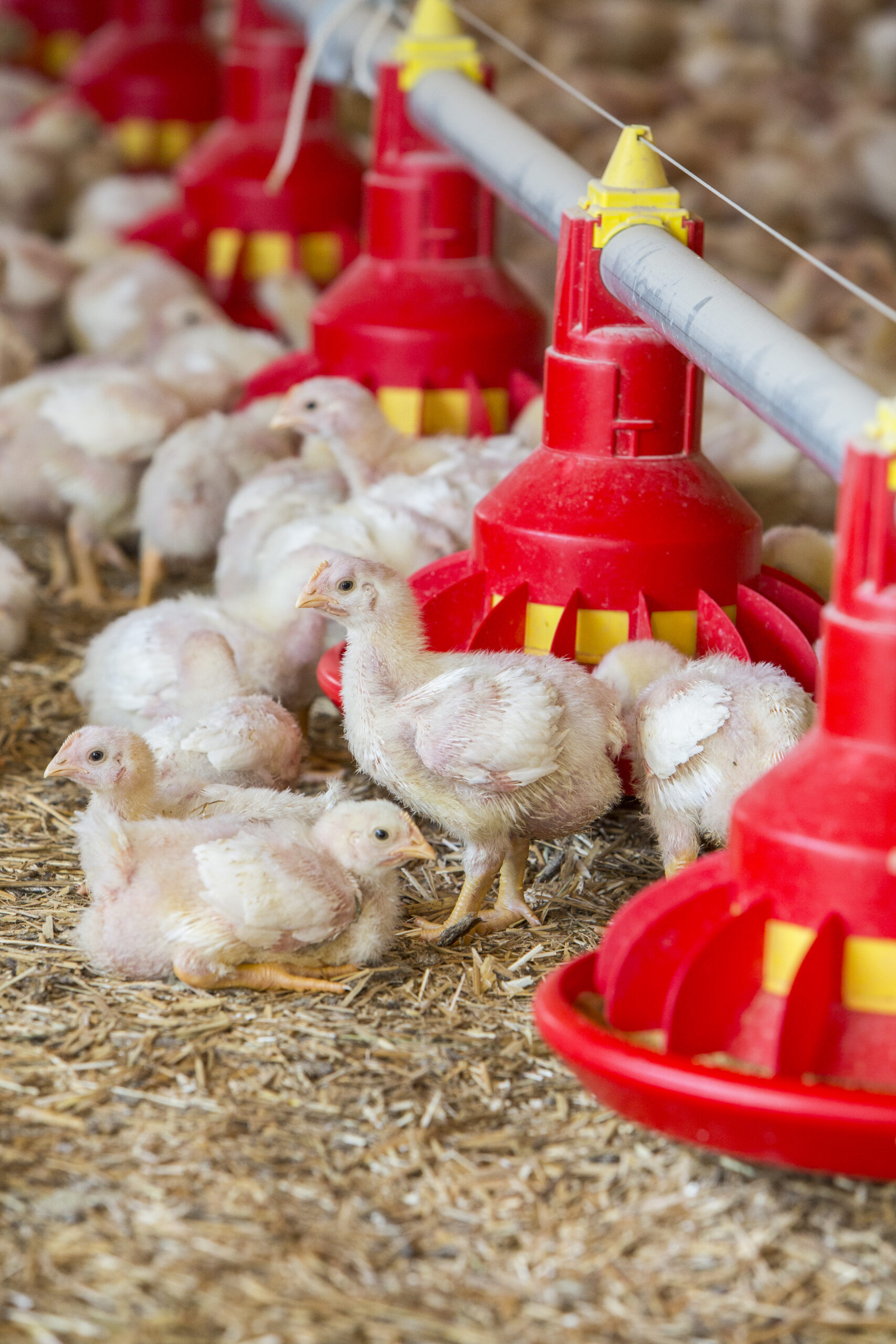
Manure nutrient recycling
Over the past several decades, livestock and poultry production has become increasingly specialized and concentrated. This is in part a result of vertical integration which has greatly improved the efficiency of poultry production since the 1950s. US agriculture has become acutely specialized in the last several decades to the point that crop and livestock production are now highly disconnected and concentrated, with fewer but larger farms now producing most of the country’s food supply. This has disrupted a longstanding closed nutrient cycle that existed for centuries before the 1950s and which bonded livestock and crop farms in close proximity out of a need to recycle nutrients from crops to livestock and then back again to crops using manure. As agricultural systems became more specialized and intensive, to feed a growing US and global population, few guidelines were put into place to ensure that surplus manure nutrients from livestock operations were returned to the croplands where animal feed was produced. In some locations today, this has resulted in manure nutrients accumulating in soils near livestock and poultry feeding operations to the point where it is affecting water and air quality.
Without a system to distribute manure nutrients more evenly and widely, the result is a surplus of nutrients, particularly nitrogen (N) and phosphorus (P), in local soils that repeatedly receive manure. The overaccumulation of manure nutrients in an area is considered an important cause of eutrophication, the biological enrichment of water bodies with nutrient pollution. Today, because of the fragmented nature of crop and livestock production, regions supporting particular livestock types (beef, dairy, poultry and swine) do not necessarily overlap with regions that produce the livestock and poultry feed. We see this in the case of corn, which is produced in the upper Midwest and then transported to the Southeast to be fed to chickens — nutrients originally used to produce the corn are displaced to the South in the form of poultry litter. Because few technologies, polices and incentives exist to return the manure from regionally specific animal feeding operations to regionally specific croplands to produce more feed, nationwide nutrient cycles have become increasingly fragmented. Spiegal et al. (2020) explored the concept of a “manureshed,” defined as the geographic area surrounding one or more livestock or poultry operations where excess manure nutrients can be recycled for agricultural production. The “manureshed” concept builds on the understanding and mechanisms used to manage livestock and poultry manure to ensure that manure nutrients return to agricultural lands where they are needed at scales that vary locally, within and across county lines, and across state lines regionally.
Poultry litter as fertilizer
Poultry litter land application improves crop yields, increases soil tilth and organic matter, enhances soil health, provides a liming effect for acidic soils and supports beneficial soil bacteria. However, when litter is repeatedly applied to the same fields at rates that exceed crop nutrient needs, soil nutrient concentrations can increase substantially and be prone to environmental losses that can degrade surface water quality. This is particularly true in the case of phosphorus which tends to overconcentrate in soils that receive manure applied at N rates. This P concentrating effect is exacerbated when litter is applied without incorporation because the soil surface can become highly concentrated in P — this is a common occurrence in Tennessee where no-till row crop production systems are used extensively to control erosion. Even with low erosion rates, the loss of even small amounts of surface soils with very high P concentrations has been scrutinized as significant causes of water quality impairment in the form of eutrophication characterized by excessive algae blooms.
Poultry litter can be a valuable fertilizer source because it can contain all the essential plant macro-nutrients and many of beneficial plant micro-nutrients, depending on types of feed, supplements and enzyme additions used at a given poultry production operation. Poultry litter has been used most extensively on forage and pasture crops grown near poultry houses. In recent years, interest in using poultry litter as a low-cost alternative to expensive inorganic chemical fertilizer has increased among row crop farmers seeking to improve yields through increased soil organic matter and improved soil quality.
However, traditional barriers exist to widespread poultry litter use, including: 1) limited availability at the appropriate time, 2) lack of expertise on how and where to best use it, 3) variability in nutrient contents (thus the need for a litter nutrient analysis) and 4) lack of information on how it performs under different tillage and crop management systems. Dry poultry litter is nutrient dense, but its physical nature and handling characteristics make long-distance transportation challenging and costly. This is the primary cause of repeated application to agricultural lands within short distances of poultry houses even though this practice can lead to negative environmental impacts on air, soil and water quality.
While new and innovative methods of utilizing litter continue to evolve, land application remains the most sustainable option.
In poultry production, the housing and flock management methods, including for manure collection and storage, vary depending on the type of poultry being raised, stage of production, targeted product market and environmental factors. As a result, the amount and quality characteristics of poultry litter from different operations is highly variable. For example, broiler litter is often stored until needed either on the floor as recycled bedding in poultry houses (Figure 1). Alternatively, it can be removed and placed in a litter storage shed (Figure 2). Ashworth et al. (2019) emphasized that values for the quantity and quality of “as excreted” poultry manure is a poor estimate for agronomic/manure application planning purposes. The only sure way to verify nutrient content of litter from a particular poultry farm is with a litter nutrient analysis. Accurate assessment of litter nutrient content is a critical aspect of any nutrient management program, including for the manureshed approach.

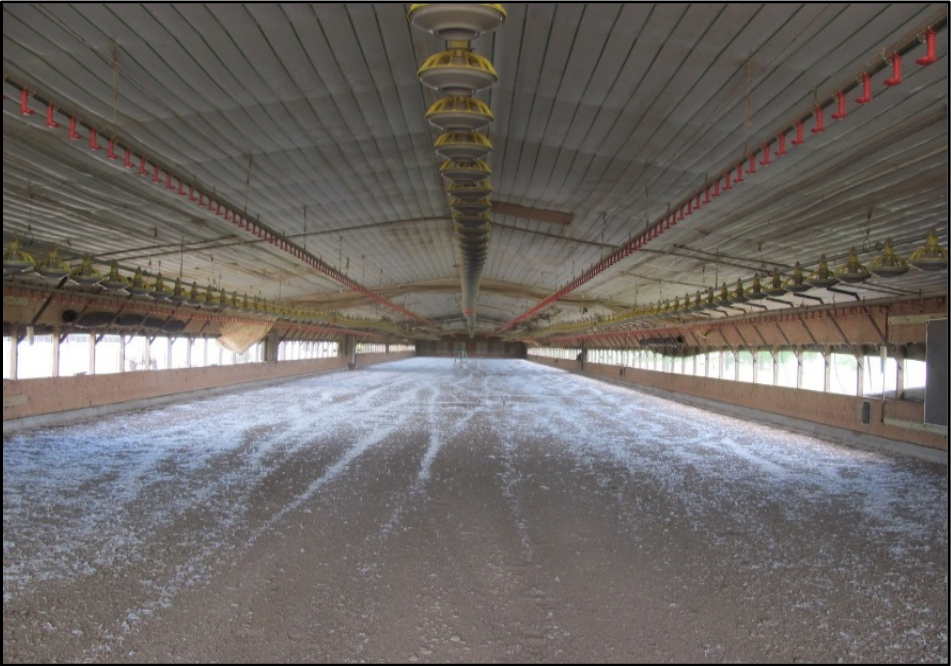
Understanding and addressing the phosphorus problem
Meeting the energy and food demands of a growing and increasingly urbanized population has dramatically altered P, N, and carbon (C) cycling in the natural environment. Modern agriculture is heavily dependent on mined phosphate fertilizers, characterized by low crop-use efficiency — this practice disrupts natural P cycles (Elser and Bennett, 2011). In intensively managed agricultural systems, where feed and fertilizer inputs of P and N are significantly greater than outputs in the products, biological controls can become overwhelmed because of large environmental losses that result in degraded water quality. We see this in poultry production areas of the southeastern United States and on the Delmarva peninsula where poultry litter has been spread on fields near poultry growout operations for decades. Repeated overapplication of P to fields in excess of crop removal has resulted in an accumulation of soil P which presents a “legacy P” challenge to improving surface water quality. Even as inputs of P are now curtailed in these areas with conservation plans, legacy P can be mobilized directly as particulate P or indirectly as dissolved P and thereby constitute a major source of P at the land- freshwater interface.
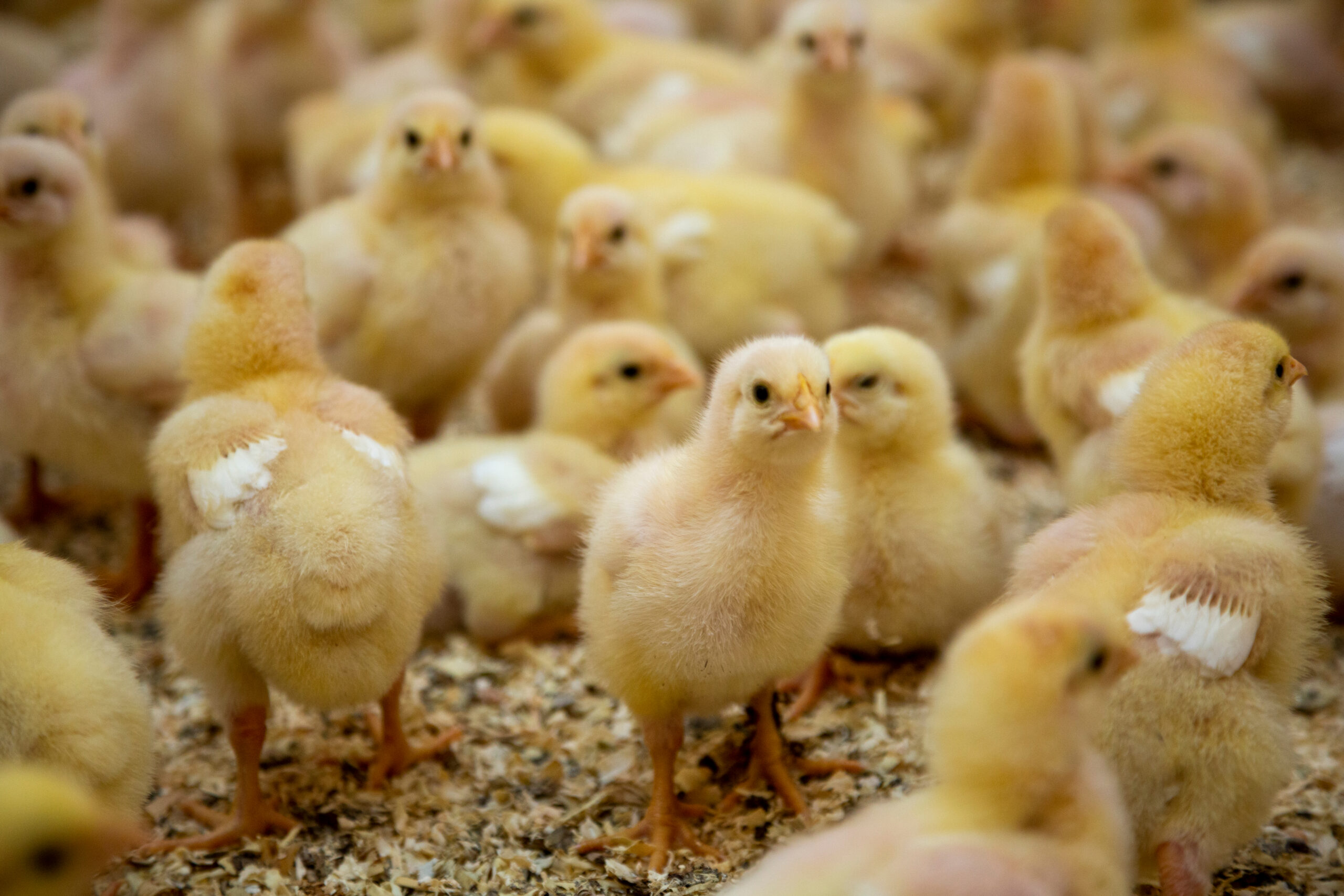
What is clear today is that the capacity of soils to adsorb P led early land managers to incorrectly conclude that its transport in dissolved form in runoff and in subsurface flow was either absent or unimportant. We now know that even though P readily accumulates in soil, there is still transport of P along pathways of concentrated surface water runoff and preferential groundwater flow that transfers significant loads of P from agricultural fields to water resources.
Legacy P reserves in soils have developed in regions where specialization and intensification of crop and livestock production result in localized manure nutrient imbalances, such as those found in the intensive poultry-producing regions of the Delmarva Peninsula and northwest Arkansas. There is broad agreement that loss of dissolved P from legacy P soils is one of the greatest challenges to improving water quality. Reducing these high legacy soil P concentrations to levels that have a lower potential to enrich runoff, for example by ceasing P applications today, can take decades to take effect, depending on the degree of soil P accumulation. Movement of P in most landscapes arises because a large fraction of total P loss from soils is in particulate form, highlighting the significance of erosion as a mechanism for mobilizing all forms of P, including legacy P. Eroded sediments are typically enriched with P relative to the bulk soil due to the preferential removal of fine surface soil particles with greater P content. Soil conservation efforts (no-till, grass waterways, riparian buffer areas, cover crops and diversion drainage) are then vital to managing legacy P movement from landscapes to waterways. Changes in land use that increase erosion can dramatically increase legacy P transfers, as noted by Duran et al. (2012) who observed significantly higher particulate P loads in watershed effluent following residential development of agricultural land.
Agricultural producers in the United States commonly use poultry litter as a source of crop nutrients. In some locations, local community programs have been established that promote manure transport from areas of intensive animal production to nutrient-deficient agricultural lands — this is in part an effort to address water quality concerns associated with the concentration of manure nutrients. Numerous logistical and market factors have hindered these programs, and for them to survive requires expert guidance for producers and recipients as well as technologies that help overcome challenges of using manures as fertilizer. A logistical infrastructure for transporting litter in a safe, timely and affordable fashion and a supportive regulatory climate are required. Understanding where the opportunities exist to transport litter from areas of surplus to areas that need crop nutrients is vital to optimize any manure transport and relocation/redistribution network.
The fact is that best management practices to improve water quality in P-rich watersheds have yielded slower and smaller results than expected. As a result, water conservationists have called for stricter land and nutrient management strategies even though limited success has resulted from the implementation of past management practices where legacy P masks the effects of current reductions in edge-of-field P losses. It is also important to accept that in any watershed-P reduction strategy it is essential to address the overall physical and social complexity of individual systems and the mitigation of non-agricultural P sources. In addition, P is a finite resource and as mined mineral P sources become scarcer and costlier to extract and process, it may become cost effective to recycle P. For example, many farm ponds and lagoons contain large amounts of P collected in runoff from agricultural facilities. While these ponds are efficient at trapping P on farms, they can become a source of dissolved P with potential recycling use.

Manuresheds
Spiegal et al. (2020) classified the 3,109 counties of the contiguous United States by their capacity to either supply manure P and N from confined livestock production (sources) or to remove excess P and N via crops (sinks). These researchers defined four manuresheds in the continental US (poultry, swine, dairy and beef) based on P source and sink strength. As expected, source counties for manure P greatly outnumbered those for manure N (390 for P and 100 for N). The vertically integrated structure of poultry and swine production, as well as the regional cooperatives and processing centers common to the dairy industry, may showcase and offer opportunity to implement the manureshed framework. However, liquid dairy and swine manures, which often have low nutrient density and a transport limit of about six miles, seriously limit opportunities for transport to distant crop producing regions that need N and P. The front end of the beef production sector (cow-calf production), in which nutrients are returned to pasture by grazing animals, also creates an obstacle to the manureshed approach with regards to manure collection and transport. However, the latter stages of beef production (backgrounding, finishing) offer the concentration of animals, a dry manure product and connection to transportation infrastructure required for wholesale manure transport and is a much better fit to the manureshed concept.
Solid poultry litter can be transported much farther than other types of manure, but its bulkiness and other handling characteristics (flowability, moisture content, etc.) still create long distance transportation challenges. One challenge with dry poultry manure is that considerable N is volatilized in storage and handling. This creates a low N to P ratio so that application of litter to meet crop N needs accelerates the accumulation of P in soils relative to inorganic fertilizers. At a national scale, however, more poultry-dominated counties were identified as sources of manure nutrients than for any other livestock industry. The vertical integration structure of the poultry industry offers more opportunities for coordinated storage and relocation of poultry manure than for other manure types. For example, in the Illinois River Watershed of northwestern Arkansas, in-house and land management of poultry litter are regulated through mandatory nutrient management plans that have evolved from historical litigation between Arkansas and Oklahoma. As a result, large amounts of poultry litter are moved out of the northwest Arkansas P source area into P sink areas such as southeast Kansas and the Mississippi Delta of eastern Arkansas. Across the country, the poultry industry has been the focus of the most effort to redistribute manure nutrients and has more experience than the beef, dairy or swine industries at nutrient redistribution programs on a regional scale.
Identifying source and sink areas are critical to the future management of manuresheds. Data for US broiler production from 2012 to 2017 indicate that Alabama, Arkansas, Georgia, Mississippi and North Carolina account for 57 percent of annual US broiler chicken production. Therefore, future expansion of poultry production should be preferentially located in in nutrient-dense sink areas, a strategy that can benefit agricultural enterprises and the environment. Due to its generally dry nature, poultry litter is best suited for transport programs that are central to achieving nutrient balances within a manureshed. However, redistribution of manure nutrients from source to sink areas is only one solution to achieving nutrient balance within a manureshed; other strategies and opportunities for promoting the recycling of nutrients should also be a part of overall manureshed nutrient management.
Manure treatment is one such option that must be considered. Though most poultry litter is relatively dry, its bulkiness, water content, flowability and challenging handling characteristics are major drawbacks to transportation of poultry litter in raw form. Reaching the full distribution potential of litter nutrients in a manureshed framework may require the treatment of poultry manure for more economic redistribution. Treated litter/manure can be expected to significantly decrease nutrient transportation costs increase economic value and market potential. Pelletizing and composting are two of the more traditional treatment processes, but there are a variety of nontraditional biological, physical and chemical treatment processes that are being developed. In recent years, animal manures have also received attention as a potential feedstock for bioenergy and biochar production through techniques such as pyrolysis, gasification and hydrothermal liquefaction. However, feedstock use is an area still in its infancy and requires more research to be economically feasible.
The manureshed concept should have increased appeal to the poultry industry because the industry has participated in government-driven efforts, as well as local, informal efforts, to redistribute poultry litter away from its source. However, in addition to coordination between government and industry to frame the structure and expected outcomes of manureshed management, systematic innovation and implementation of technologies, both on and off the farm, are needed for large manureshed-scale nutrient management to succeed. This includes technologies and management strategies that concentrate nutrients, eliminate harmful pathogens and produce a material with a consistent quality. Future work is necessary, including defining manuresheds in relation to individual confined animal feeding operations, which could help identify intra-county and intra-state pathways for redistribution of manure nutrients that considers the legacies of past management of confined livestock and manure application.
Summary
For centuries, a cornerstone of sustainable crop and livestock production systems has been the recycling of manure nutrients. This worked well until we began to separate crop and livestock production in different regions of the country, a process that has increased food production efficiency but at the same time upset the balance and recycling of manure nutrients. Highly specialized crop and livestock production in recent decades has fragmented and concentrated the two industries to a point that manure nutrients have accumulated in and around livestock feeding operations to a level that is affecting the quality of water, air and even quality of life in some areas. The vertical integration of the meat and egg production segments of the poultry industry lends itself well to the infrastructure requirements and decision-making approach needed to accomplish manureshed management. However, even with widespread vertical integration, the beneficial nature of dry manures as a soil amendment, and the considerable experience with local and regional manure management and transport on a smaller scale that currently exists, the poultry industry faces numerous challenges in achieving widespread implementation of manureshed-scale nutrient balances. Recycling manure nutrients on lands where they have not been previously used will require changes not only in manure processing and transportation, but also in agronomy, bioenergy, cropping systems, landscaping and horticulture. However, the manureshed concept can increase the understanding needed to reconnect crop and livestock agricultural systems and target manure nutrient redistribution efforts. Managing this redistribution challenge will require the efforts of the poultry industry, crop and livestock farmers, government officials, manure brokers, transporters (haulers and applicators) and others.
References are available on request
By courtesy of The University of Tennessee Institute of Agriculture and UT Extension



